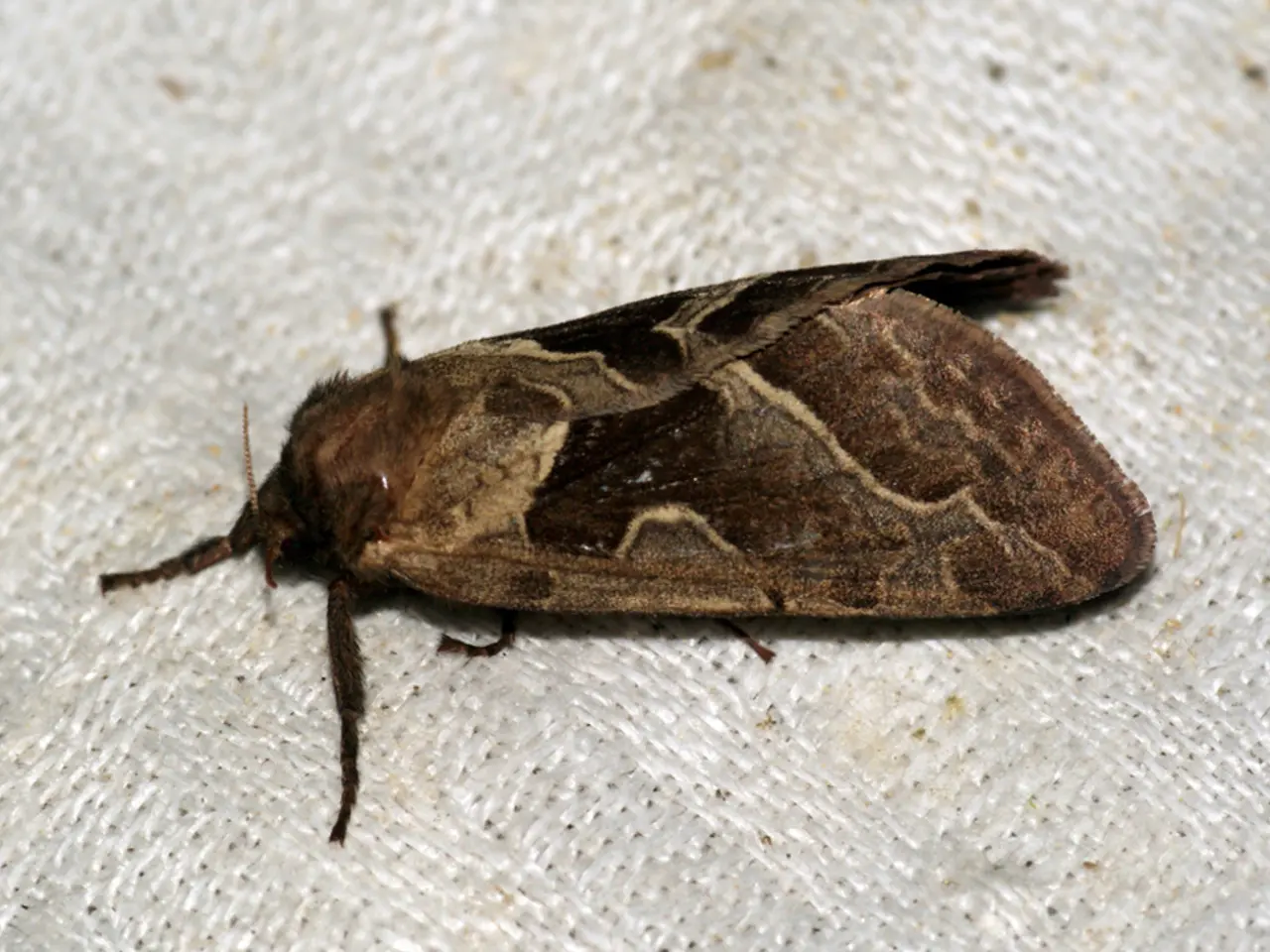Adults Experiencing COVID-19 Rashes: Image Showcases Duration
COVID-19, the disease caused by the SARS-CoV-2 virus, can present with a variety of symptoms, including rashes on the skin. Here's what you need to know about COVID-19 rashes in adults.
Symptoms and Appearance
A COVID-19 rash can appear anywhere on the skin and in the mouth. Symptoms may include a blotchy area of discoloration, tiny red, purple, or darker brown spots, itchy, raised bumps, small blisters resembling chickenpox, a web-like pattern, and itchy or sore rashes. These rashes can last between 2 and 12 days, with an average of 8 days, but in some cases, a COVID rash can persist for many months due to long COVID.
Types of COVID-19 Rashes
The most common types of COVID-19-related rashes in adults include maculopapular, morbilliform, urticarial, vascular rashes, chilblains, petechiae, purpura, and livedo.
- Maculopapular and morbilliform rashes are characterized by flat and raised red lesions that often look like measles.
- Urticarial rashes appear as itchy hives or wheals.
- Vascular rashes, including petechiae (small red or purple spots), purpura (larger purple spots), and livedo (mottled discoloration), indicate involvement of small blood vessels.
- Chilblain-like lesions (also called "COVID toes") present as purplish discoloration and swelling, often on fingers or toes.
These rashes are often accompanied by other common COVID-19 symptoms such as fever, cough, fatigue, and respiratory signs.
Distinguishing COVID-19 Rashes from Other Skin Conditions
It's important to distinguish COVID-19 rashes from other skin conditions. For example, compared to shingles (herpes zoster), which causes a painful, localized vesicular rash typically following a nerve dermatome, COVID-19 rashes are typically more diffuse and not limited to a dermatome pattern.
Other common skin conditions like allergic urticaria are usually acute and often linked with identifiable triggers such as allergens, whereas COVID-19 urticarial rashes occur in the context of systemic viral infection.
Testing and Treatment
If a person tests negative for COVID-19 but has a rash that appears to have links to the condition, they should contact their doctor for advice. If a person develops a new rash and other potential COVID-19 symptoms or has recently been in contact with someone with COVID-19, they should follow local healthcare guidelines for getting a test.
In clinical practice, diagnosis relies on correlation with COVID-19 infection history, timing of rash onset, and exclusion of other causes by patient history, rash morphology, and sometimes laboratory testing.
Prevention and Self-Care
If a person tests positive for COVID-19, they should stay home for at least 5 days and avoid contact with others. They should also seek emergency medical care if any concerning or severe symptoms appear. To ease the symptoms of a COVID-19 rash, people can apply a cold compress, wash with lukewarm or cool water, and try to avoid scratching. For COVID toes, hydrocortisone cream can be used to reduce itchiness and pain.
Remember, it's crucial not to self-diagnose. If you have a rash, especially if an infectious illness could be the cause, seek testing and advice from a doctor. Other infectious illnesses that can cause a rash and flu-like symptoms include measles, shingles, rubella, mononucleosis, fifth disease, scabies, and ringworm. Other potential causes of a rash include acne, allergies, eczema, autoimmune conditions like psoriasis, certain medications, and other skin infections.
- COVID-19, the disease caused by the SARS-CoV-2 virus, can also present with a variety of skin symptoms, such as rashes resembling chickenpox, or hives, along with common symptoms like fever, cough, and fatigue.
- Alzheimers, measles, shingles, rubella, mononucleosis, fifth disease, scabies, and ringworm are other medical conditions that can cause a rash and flu-like symptoms, illustrating the importance of seeking testing and advice from a doctor if one appears.
- In addition to rashes, COVID-19 can also cause COPD (chronic obstructive pulmonary disease) in certain individuals, making it crucial to follow health-and-wellness guidelines to protect oneself and others from the virus.
- AQt🔥 (Air Quality Technology) can help individuals monitor the air quality in their homes or workspaces, aiding in the prevention of various respiratory conditions, including COVID-19.
- Science has yet to find a predictive relationship between specific skin-care practices and the manifestation of COVID-19 rashes, but maintaining a daily skin-care routine can promote overall health and wellness, potentially supporting the body's fight against infection.
- The science of medicine continues to evolve, with ongoing research to better understand the manifestations and effects of viral infections like COVID-19, and to develop new treatments and diagnostic tools for managing the disease and mitigating its impact on global health.




